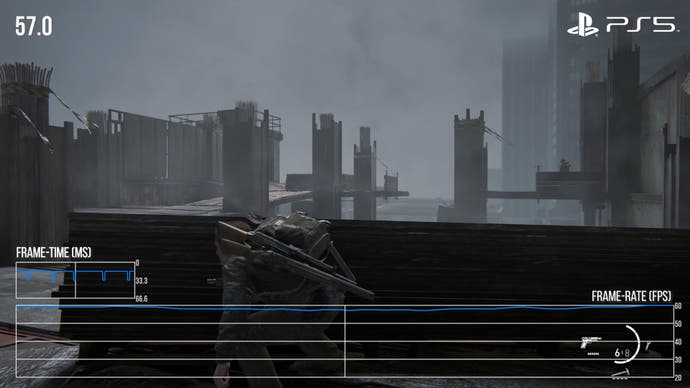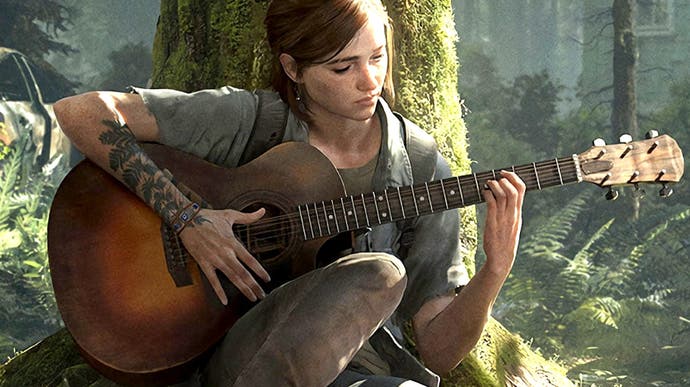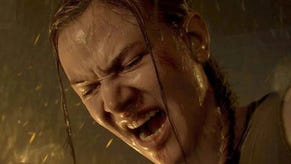The Last of Us Part 2 has been upgraded for PS5 - and we've tested it
DF is first with analysis of Naughty Dog's 60fps patch.
The Last of Us Part 2 has finally received its long-awaited PlayStation 5 upgrade, 11 months to the day since Naughty Dog's epic sequel launched on PS4 and Pro. It's a free upgrade takes the form of a 299MB patch - version 1.08 - that automatically updates the PlayStation 4 version of the game, offering PS5 users the chance to play the game at 60 frames per second. We've had the patch for a week now, allowing us to extensively test and re-test the game from start to finish.
It's an interesting release: The Last of Us Part 2 stands as one of the most technically ambitious titles released for the PlayStation 4 and we wondered how well this sort of performance patch would work out. After all, no matter how you feel about the game, it's a stunning technical achievement that flirts with the limits of its original platform - and capping to 30fps was required in order to deliver its beautiful visuals. With this in mind, we were curious to see how it would fare on PS5 with its frame-rate limited removed. Can PS5 really lock to 60fps?
When looking at this update, it highlights a change in the marketplace compared to the last generation. With no backwards compatibility path for PlayStation 3 games on PS4, Naughty Dog extensively revamped The Last of Us for the Gen 8 console, using the exercise to establish the technological foundations of its new engine. The Last of Us Remastered debuted 13 months after its original launch, mostly delivering frame-rate and resolution advantages. One generation on, the tables turn. Additional resolution was already delivered via Sony's mid-generation console refresh - PlayStation 4 Pro - meaning that frame-rate was effectively the only big upgrade left, short of a total engine revamp.
As this isn't a full re-release or a remaster, what Naughty Dog has delivered is an upgrade that sticks to the rulebook established with prior first-party PS5 patches. God of War, Ratchet and Clank, Ghost of Tsushima and Days Gone all went down the same path, delivering the PlayStation 4 Pro visual feature set but with the frame-rate unlocked, allowing for 60 frames per second gaming. So, to be clear, all other settings related to the game's visuals - including resolution - remain exactly as they were on the Pro, so that means it's still a 2560x1440 game that still looks the part owing to its temporal anti-aliasing technique, while all other visual details remain identical to the Pro offering. Compared to the other patches, there is one small change though: while 60fps is now the default on PS5, a new menu option allows users to swap back to 30fps if they prefer. [UPDATE: There is talk of 'enhanced resolution' surrounding this patch, but Sony has confirmed with us that this is part of the suite of features PS5 can bring to PS4 titles running under back-compat, not the TLOU2 patch specifically, which is indeed 1440p locked.]
In terms of how close PlayStation 5 gets to a locked 60fps - let's just say that there's little to worry about here. Similar to other first-party titles running under 'back compat plus', PS5 is capable not just of doubling PS4 Pro performance but in many cases exceeding it. Looking back at TLOU2 running on Pro, scenes with lots of water could slip beneath 30fps. It was never a big deal as the dips didn't last long and weren't overly pronounced, but they were there. It suggests that Naughty Dog pushed to the limits in some areas, sometimes not quite hitting their performance targets.
On PlayStation 5, all of those same areas now run completely locked at 60 frames per second with not even the slightest hint of any problems. And it makes sense. PS5 features the same compute unit count as PlayStation 4 Pro and can drop back into GCN-emulation mode, effectively disabling the architectural advantages of RDNA2. With the GPU running flat out, PS5 delivers almost 2.5 times the compute power. This is matched with just over two times the memory bandwidth and based on the results seen here and in other Sony first-party back-compat plus titles, the end result is a measurable increase in performance of over two times.
Just for good measure, I also sampled a scene with lots of enemies and alpha effects - it was already a stable 30fps on PS4 Pro but the demands are slightly different. It's arguably more of a memory bandwidth test than a straight compute challenge but the final result is the same: a complete 60fps lock on PlayStation 5. In fact, over the course of the game, I captured about eight hours of footage on PS5. No matter how complex the scene, it always seemed to hit the target - with one exception.
Check out the screenshot below. In this battle sequence set on top of an abandoned skyscraper, in one specific area and engaging enemies, a drop in performance found on PlayStation 4 Pro also manages to bring about a small, but sustained frame-rate dip on PS5. It's the only example of a performance blip I could find on PS5. It's a little puzzling because it's not entirely clear what's going on. This is a cool sequence but it's certainly not as visually taxing as many other areas in the game, nor is it as large in scope. It's just this building site shrouded in fog. This is nothing more than an academic finding, as it seems to the only sequence that doesn't doggedly adhere to 60fps and even then, it only occurs in that specific position.

So, it's stable, but how does the 60fps patch improve the experience? In general, whether we're talking about back compat plus patch upgrades, system level interventions like FPS Boost or straight out ports from the last generation to the current one, the leap from 30fps to 60fps is transformative and in terms of play, that applies equally to The Last of Us Part 2 as well. In particular, I found aiming much more responsive overall. The game has a moderately heavy feel by default at 30 frames per second but it's extremely snappy now. The only gripe is minor in the grand scheme of things: I'm disappointed that the shutter speed for motion blur doesn't seem to have been adjusted for the higher frame-rate and as a result, it loses some of the cinematic flair you get at 30fps. The solution would have been to add a shutter speed slider in the options menu, which would benefit all versions as of the game, as it would allow both lovers and haters of motion blur to find a setting that pleases them.
Loading times? They're improved to a certain extent, but the relatively limited nature of the boost here hammers home that this is a backwards compatible release, not a native PlayStation 5 app. During play, The Last of Us Part 2 is basically a continuous, seamless experience - streaming in the background as you play with no interruptions for loading. But initial loads can't be masked, and in one sample here, a 91 second wait on PS4 Pro reduces down to 43 seconds on PS5 - just over twice as fast. It's nice to see an improvement, but owing to the nature of the code, it cannot access PS5's lower level storage APIs that see the SSD perform at its best.
While the loading aspect isn't exactly game-changing, the boost to performance certainly is and its arrival has allowed me to go back and appreciate what Naughty Dog accomplished technically and to share those thoughts with you in the video above. You see, going back to the launch of the game, Naughty Dog was protective of spoilers and review embargoes came with limitations on the content we could cover. There were plenty of sequences that that were interesting and striking that we couldn't talk about - but now we can, so as well as testing out the PS5 patch, today's coverage also serves to complete our original tech analysis, in a way. Ultimately, with its upgrade for PS5, The Last of Us Part 2 runs smoother than ever and I enjoyed replaying it - you simply can't go wrong with a frame-rate boost and the Naughty Dog game looks and feels better than ever.











